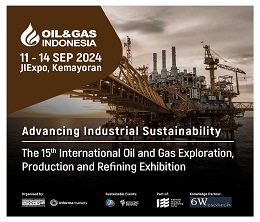Latin America Industrial Refrigeration Systems Market (2024-2030) | Forecast, Industry, Share, Analysis, Size, Value, Revenue, Growth, Companies, Trends & Outlook
Market Forecast By Equipment (Compressor, Condensers, Evaporators, Controls & Others (Pumps, Valves, Vessels and Auxiliary Equipment)), By Refrigerants (Ammonia, Carbon Dioxide, Hydro-chlorofluorocarbons, Others (Chlorofluorocarbon, Fluorocarbon, Hydrocarbon, Air and Water)), By Applications (Food & Beverage, Oil & Gas, Chemicals & Petrochemicals & Others), By Countries (Mexico, Brazil, Argentina & Rest of Latin America Region) and competitive landscape
| Product Code: ETC002405 | Publication Date: Apr 2020 | Product Type: Report | |
| Publisher: 6Wresearch | No. of Pages: 200 | No. of Figures: 90 | No. of Tables: 30 |
Egypt Yarn Market Highlights
| Report Name | Latin America Industrial Refrigeration Systems Market |
| Forecast period | 2024-2030 |
| CAGR | 7.3% |
| Growing Sector | Food & Beverage |
Topics Covered in Latin America Industrial Refrigeration Systems Market Report
Latin America Industrial Refrigeration Systems Market report thoroughly covers the market by Equipment, Refrigerants, Applications, and Countries. The market report provides an unbiased and detailed analysis of the ongoing market trends, opportunities/high growth areas, and market drivers, which would help the stakeholders to devise and align their market strategies according to the current and future market dynamics.
Latin America Industrial Refrigeration Systems Market Synopsis
The Latin America Industrial Refrigeration Systems Market is witnessing robust growth, fueled by the expanding food and beverage industry and the increasing demand for efficient refrigeration solutions across various sectors.
According to 6Wresearch, the Latin America Industrial Refrigeration Systems Market is projected to grow at a CAGR of 7.3% from 2024-2030. The food and beverage sector is experiencing the highest growth, driven by the need for advanced refrigeration systems to preserve perishable goods. Additionally, the oil and gas, and chemicals and petrochemicals sectors are significantly contributing to the market demand due to their reliance on industrial refrigeration systems for various applications. The adoption of eco-friendly refrigerants and stringent environmental regulations are further propelling market growth.
However, the market faces challenges such as high initial costs and the complexity of installation and maintenance of advanced refrigeration systems. Additionally, the need for skilled labor to manage and operate these systems can be a barrier for some companies. The fluctuating prices of refrigerants and energy costs also pose challenges to the market's growth.
Latin America Industrial Refrigeration Systems Market: Leading Players
Leading players in the Latin America Industrial Refrigeration Systems Market include Johnson Controls, Emerson Electric Co., and Danfoss. Johnson Controls is recognized for its comprehensive range of refrigeration solutions catering to various industries. Emerson Electric Co. offers advanced refrigeration technologies focusing on efficiency and sustainability. Danfoss is known for its innovative refrigeration components and systems, ensuring optimal performance and energy savings.
Latin America Industrial Refrigeration Systems Industry: Government Initiatives
Governments across Latin America are implementing various initiatives to support the growth of the industrial refrigeration sector. These include regulations aimed at promoting the use of environmentally friendly refrigerants and improving energy efficiency standards. Investments in cold chain infrastructure and incentives for adopting advanced refrigeration technologies are also driving market growth. Also, initiatives to boost the food and beverage sector and enhance storage and distribution facilities are expected to increase the demand for industrial refrigeration systems. Additionally, government support for research and development in refrigeration technology is likely to foster innovation in the market.
Future Insights of the Market
The Latin America Industrial Refrigeration Systems Market is anticipated to witness significant growth over the next five years. Market growth is expected to be driven by technological advancements such as IoT-enabled refrigeration systems. Growing inclination towards energy-efficient and eco-friendly refrigeration solutions, coupled with increasing demand for smart and automated systems by concerned industries, is expected to influence the sales of advanced models. In addition to this, the food and beverage industry will keep its importance high as more and more manufacturers offer premium refrigeration solutions. Moreover, growth opportunities are significant within the chemicals and petrochemicals sector as increasing preference for high-end refrigeration systems among companies would lift up demand. In brief, growth will be driven by innovation and sustainability-oriented focus in the market.
Market Segmentation By Equipment
According to Ravi Bhandari, Research Head, 6Wresearch, compressors are leading the market due to their crucial role in maintaining the efficiency of refrigeration systems across various applications.
Market Segmentation By Refrigerants
Ammonia is in high demand due to its efficiency and lower environmental impact, making it a preferred choice in industrial refrigeration systems.
Market Segmentation By Applications
The food and beverage sector holds the largest share due to continuous improvements in preserving perishable goods and ensuring product quality.
Market Segmentation By Countries
Brazil took the top spot, thanks to its mature industrial base and increasing adoption of advanced refrigeration systems across sectors.
Key Attractiveness of the Report
- 10 Years of Market Numbers.
- Historical Data Starting from 2020 to 2023.
- Base Year: 2023
- Forecast Data until 2030.
- Key Performance Indicators Impacting the Market.
- Major Upcoming Developments and Projects.
Key Highlights of the Report
- Latin America Industrial Refrigeration Systems Market Overview
- Latin America Industrial Refrigeration Systems Market Outlook
- Latin America Industrial Refrigeration Systems Market Forecast
- Historical Data of Latin America Industrial Refrigeration Systems Market Revenues for the Period 2020-2030
- Latin America Industrial Refrigeration Systems Market Size and Latin America Industrial Refrigeration Systems Market Forecast of Revenues, Until 2030
- Historical Data of Latin America Industrial Refrigeration Systems Market Revenues, By Equipment, for the Period 2020-2030
- Market Size & Forecast of Latin America Industrial Refrigeration Systems Market Revenues, By Equipment, Until 2030
- Historical Data of Latin America Industrial Refrigeration Systems Market Revenues, By Refrigerants, for the Period 2020-2030
- Market Size & Forecast of Latin America Industrial Refrigeration Systems Market Revenues, By Refrigerants, Until 2030
- Historical Data of Latin America Industrial Refrigeration Systems Market Revenues, By Applications, for the Period 2020-2030
- Market Size & Forecast of Latin America Industrial Refrigeration Systems Market Revenues, By Applications, Until 2030
- Historical Data of Mexico Industrial Refrigeration Systems Market Revenues, for the Period 2020-2030
- Market Size & Forecast of Mexico Industrial Refrigeration Systems Market Revenues, Until 2030
- Historical Data of Brazil Industrial Refrigeration Systems Market Revenues, for the Period 2020-2030
- Market Size & Forecast of Brazil Industrial Refrigeration Systems Market Revenues, Until 2030
- Historical Data of Argentina Industrial Refrigeration Systems Market Revenues, for the Period 2020-2030
- Market Size & Forecast of Argentina Industrial Refrigeration Systems Market Revenues, Until 2030
- Market Drivers and Restraints
- Latin America Industrial Refrigeration Systems Market Price Trends
- Latin America Industrial Refrigeration Systems Market Trends and Industry Life Cycle
- Porter’s Five Force Analysis
- Market Opportunity Assessment
- Latin America Industrial Refrigeration Systems Market Share, By Players
- Latin America Industrial Refrigeration Systems Market Share, By Regions
- Latin America Industrial Refrigeration Systems Market Overview on Competitive Benchmarking
- Company Profiles
- Key Strategic Recommendations
Market Scope and Segmentation
The report provides a detailed analysis of the following market segments:
By Equipment
- Compressor
- Condensers
- Evaporators
- Controls
- Others (Pumps, Valves, Vessels, and Auxiliary Equipment)
By Refrigerants
- Ammonia
- Carbon Dioxide
- Hydro-Chlorofluorocarbons
- Others (Chlorofluorocarbon, Fluorocarbon, Hydrocarbon, Air, and Water)
By Applications
- Food & Beverage
- Oil & Gas
- Chemicals & Petrochemicals
- Others
By Countries
- Mexico
- Brazil
- Argentina
- Rest Of Latin America Region
Latin America Industrial Refrigeration Systems Market (2024-2030): FAQs
| 1 Executive Summary |
| 2 Introduction |
| 2.1 Report Description |
| 2.2 Key Highlights of The Report |
| 2.3 Market Scope & Segmentation |
| 2.4 Research Methodology |
| 2.5 Assumptions |
| 3 Latin America Industrial Refrigeration Systems Market Overview |
| 3.1 Latin America Industrial Refrigeration Systems Market Revenues, 2020-2030F |
| 3.2 Latin America Industrial Refrigeration Systems Market Revenue Share, By Equipment, 2020 & 2030F |
| 3.3 Latin America Industrial Refrigeration Systems Market Revenue Share, By Refrigerants, 2020 & 2030F |
| 3.4 Latin America Industrial Refrigeration Systems Market Revenue Share, By Applications, 2020 & 2030F |
| 3.5 Latin America Industrial Refrigeration Systems Market Revenue Share, By Countries, 2020 & 2030F |
| 3.6 Latin America Industrial Refrigeration Systems Market Industry Life Cycle |
| 3.7 Latin America Industrial Refrigeration Systems Market- Porter’s Five Forces |
| 4 Latin America Industrial Refrigeration Systems Market Dynamics |
| 4.1 Impact analysis |
| 4.2 Market Drivers |
| 4.3 Market Restraints |
| 5 Latin America Industrial Refrigeration Systems Market Trends |
| 6 Latin America Industrial Refrigeration Systems Market Overview, By Equipment |
| 6.1 Latin America Industrial Refrigeration Systems Market Revenues, By Compressor, 2020-2030F |
| 6.2 Latin America Industrial Refrigeration Systems Market Revenues, By Condensers, 2020-2030F |
| 6.3 Latin America Industrial Refrigeration Systems Market Revenues, By Evaporators, 2020-2030F |
| 6.4 Latin America Industrial Refrigeration Systems Market Revenues, By Controls, 2020-2030F |
| 6.5 Latin America Industrial Refrigeration Systems Market Revenues, By Others, 2020-2030F |
| 7 Latin America Industrial Refrigeration Systems Market Overview, By Refrigerants |
| 7.1 Latin America Industrial Refrigeration Systems Market Revenues, By Ammonia, 2020-2030F |
| 7.2 Latin America Industrial Refrigeration Systems Market Revenues, By Carbon Dioxide, 2020-2030F |
| 7.3 Latin America Industrial Refrigeration Systems Market Revenues, By Hydro-chlorofluorocarbons, 2020-2030F |
| 7.4 Latin America Industrial Refrigeration Systems Market Revenues, By Others, 2020-2030F |
| 8 Latin America Industrial Refrigeration Systems Market Overview, By Applications |
| 8.1 Latin America Industrial Refrigeration Systems Market Revenues, By Food & Beverages, 2020-2030F |
| 8.2 Latin America Industrial Refrigeration Systems Market Revenues, By Oil & Gas, 2020-2030F |
| 8.3 Latin America Industrial Refrigeration Systems Market Revenues, By Chemicals & Petrochemicals, 2020-2030F |
| 8.4 Latin America Industrial Refrigeration Systems Market Revenues, By Others, 2020-2030F |
| 9 Mexico Industrial Refrigeration Systems Market Overview |
| 9.1 Mexico Industrial Refrigeration Systems Market Revenues, 2020-2030F |
| 9.2 Mexico Industrial Refrigeration Systems Market Revenues, By Equipment, 2020-2030F |
| 9.3 Mexico Industrial Refrigeration Systems Market Revenues, By Refrigerants, 2020-2030F |
| 9.4 Mexico Industrial Refrigeration Systems Market Revenues, By Applications, 2020-2030F |
| 10 Brazil Industrial Refrigeration Systems Market Overview |
| 10.1 Brazil Industrial Refrigeration Systems Market Revenues, 2020-2030F |
| 10.2 Brazil Industrial Refrigeration Systems Market Revenues, By Equipment, 2020-2030F |
| 10.3 Brazil Industrial Refrigeration Systems Market Revenues, By Refrigerants, 2020-2030F |
| 10.4 Brazil Industrial Refrigeration Systems Market Revenues, By Applications, 2020-2030F |
| 11 Argentina Industrial Refrigeration Systems Market Overview |
| 11.1 Argentina Industrial Refrigeration Systems Market Revenues, 2020-2030F |
| 11.2 Argentina Industrial Refrigeration Systems Market Revenues, By Equipment, 2020-2030F |
| 11.3 Argentina Industrial Refrigeration Systems Market Revenues, By Refrigerants, 2020-2030F |
| 11.4 Argentina Industrial Refrigeration Systems Market Revenues, By Applications, 2020-2030F |
| 12 Rest of Latin America Industrial Refrigeration Systems Market Overview |
| 12.1 Rest of Latin America Industrial Refrigeration Systems Market Revenues, 2020-2030F |
| 13 Latin America Industrial Refrigeration Systems Market Key Performance Indicators |
| 14 Latin America Industrial Refrigeration Systems Market Opportunity Assessment |
| 14.1 Latin America Industrial Refrigeration Systems Market Opportunity Assessment, By Equipment, 2030F |
| 14.2 Latin America Industrial Refrigeration Systems Market Opportunity Assessment, By Refrigerants, 2030F |
| 14.3 Latin America Industrial Refrigeration Systems Market Opportunity Assessment, By Applications, 2030F |
| 15 Latin America Industrial Refrigeration Systems Market Competitive Landscape |
| 15.1 Latin America Industrial Refrigeration Systems Market Revenue Share, By Companies, 2023 |
| 15.1.1 Argentina Industrial Refrigeration Systems Market Revenue Share, By Companies, 2023 |
| 15.1.2 Mexico Industrial Refrigeration Systems Market Revenue Share, By Companies, 2023 |
| 15.1.3 Brazil Industrial Refrigeration Systems Market Revenue Share, By Companies, 2023 |
| 15.2 Latin America Industrial Refrigeration Systems Market Competitive Benchmarking, By Operating Parameters |
| 16 Company Profiles |
| 17 Key Recommendations |
| 18 Disclaimer |
- Single User License$ 4,560
- Department License$ 5,055
- Site License$ 5,595
- Global License$ 6,000
Search
Related Reports
- India Video Surveillance Market (2024-2030) | Size, industry, Share, Trends, Revenue, Analysis, Forecast, Growth, Value, Outlook
- India Air Conditioner (AC) Market (2024-2030) | Share, Size, Growth, Industry, Segmentation, Trends, Value, Revenue, Analysis & Outlook
- Poland Printing Market (2024-2030) | Trends, Companies, Share, Industry, Value, Growth, Analysis, Outlook, Forecast, Size & Revenue
- Argentina Data storage devices Market (2024-2030) | Size, Share, Industry, Trends, Growth, Value, Revenue, Analysis & Outlook
- UAE Cyber Security Market (2024-2030) | industry, Size, Share, Revenue, Analysis, Forecast, Growth, Trends & Outlook
- Professional Headset Market (2024-2030) | Companies, Outlook, Trends, Value, Forecast, Size, Analysis, Share, Growth, Revenue & Industry
- Polyurethane Market (2024-2030) | Trends, Companies, Analysis, Size, Share, Industry, Revenue, Outlook, Forecast, Value & Growth
- Orphan Drugs Market (2024-2030) | Outlook, Revenue, Value, Companies, Analysis, Size, Share, Forecast, Industry, Growth & Trends
- Military Robotic and Autonomous (RAS) Systems Market (2024-2030) | Outlook, Size, Forecast, Value, Trends, Growth, Industry, Analysis, Revenue, Share & Companies
- Infectious Disease Point-of-Care Testing Market (2024-2030) | Share, Revenue, Growth, Forecast, Analysis, Trends, Value, Companies, Industry, Outlook, Size
Industry Events and Analyst Meet
Our Clients
Whitepaper
- Middle East & Africa Commercial Security Market Click here to view more.
- Middle East & Africa Fire Safety Systems & Equipment Market Click here to view more.
- GCC Drone Market Click here to view more.
- Middle East Lighting Fixture Market Click here to view more.
- GCC Physical & Perimeter Security Market Click here to view more.
6WResearch In News
- India's Printer Market Faces 20.7% Decline in Q4 2023: Epson and HP Lead Amidst Downturn
- India's Camera Market Sees 8.9% Decline in Q4 2023; Canon Leads with 38.4% Share
- Doha a strategic location for EV manufacturing hub: IPA Qatar
- Demand for luxury TVs surging in the GCC, says Samsung
- Empowering Growth: The Thriving Journey of Bangladesh’s Cable Industry
- The future of gaming industry in the Philippines













